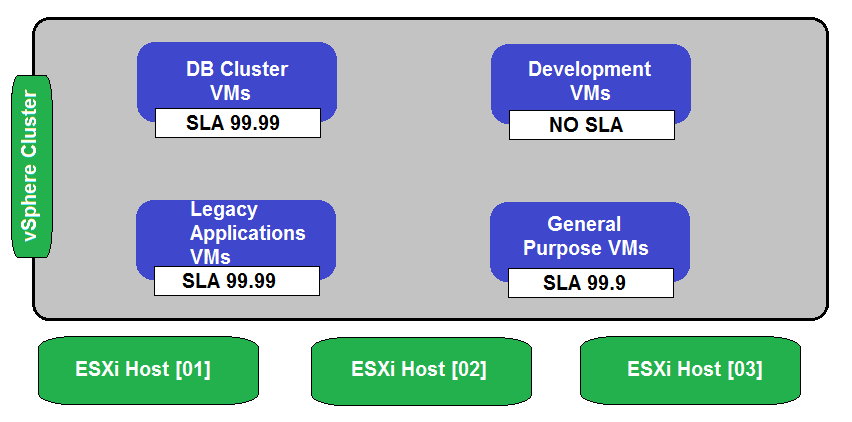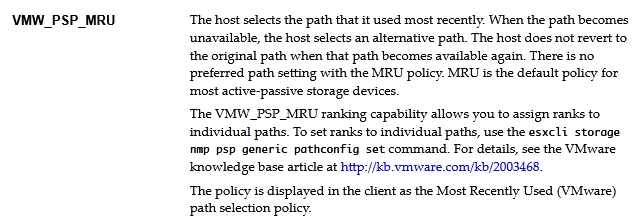The architect for a large enterprise is tasked with reviewing a proposed design created by a service partner.
Which design elements are expected to be detailed within the physical design section of the documentation?
B
An organization's existing vSphere environments are configured for Enhanced Linked Mode. The DevOps team automates the creation of hardened virtual machine images for various operating systems. Their continuous integration/continuous delivery (CI/CD) pipeline runs a task at the end of a successful build, which uploads the Open Virtualization Format (OV) image to a sandbox content library, deploys a virtual machine from the image, and then destroys these objects after quality checks are complete.
The following requirements have been noted:
✑ All content libraries and images must be centrally created and managed.
✑ All images must be capable of being updated.
✑ All images must be refreshed and available to subscribed libraries within 24 hours.
✑ All images must provide details of the image contents and versions.
✑ All images must be capable of being reverted to a previous version.
✑ All images must be capable of having the hardware and guest operating system customized during deployment.
Which three recommendations should the architect make to design a content library solution that will meet these requirements? (Choose three.)
ACF
What is a benefit of using a scale-out method for handling vSphere cluster growth?
D
Reference:
https://docs.vmware.com/en/VMware-Validated-Design/services/vmware-validated-design-sddc-scale-workload.pdf
Refer to the exhibit.
During a requirements gathering workshop, the customer shares the following diagram regarding their availability service-level agreements (SLAs):
The customer wants database application level availability to always take precedence.
What should the architect recommend to meet the customer's requirement?
D
An architect is reviewing a physical storage design. The customer has specified that a new active-passive based storage array will be used to provide storage for the vSphere clusters.
Which configuration should for the architect recommended?
B
Reference:
https://docs.vmware.com/en/VMware-vSphere/6.5/vsphere-esxi-vcenter-server-65-storage-guide.pdf
(188)
An architect is designing a new VMware software-designed data center (SDDC) using vSphere 7 to meet the following requirements:
✑ The SDDC must be deployed at two locations: primary and secondary.
✑ vSphere Replication must be used to replicate virtual machines between the two locations.
✑ Site Recovery Manager must be used to orchestrate disaster recovery (DR) activities.
✑ One single-sign on (SSO) domain must be used to authenticate access at both locations.
Which design decision should the architect make to meet these requirements?
D
An architect is designing an environment for a retail customer. The design will use a single small vCenter Server Appliance and a cluster of eight ESXi hosts at a remote site. There is a single 10 GbE connected network at the remote site to support all management services. It is not possible to create additional management networks at the remote site. Virtual machine backups at the site will be dependent on the vCenter Server being available.
Which design decision should the architect make to maximize availability for backups?
C
As part of a requirements gathering workshop, the customer provides the following requirements for the design of a new greenfield virtual infrastructure:
✑ Some applications have a latency that must be less than 5 minutes.
✑ The solution must be able to support a workload growth rate of 10% per year.
Which requirement classification is being gathered for the design documentation?
A
An architect is designing a new vSphere cluster. The requirement is to provide a total of 96 CPU cores and 1.5 TB RAM across all hosts.
The following information has been provided:
✑ Two different physical hardware profiles are available for the ESXi hosts in the cluster.
- Profile 1: 16 CPU cores and 256 GB RAM
- Profile 2: 32 CPU cores and 512 GB RAM
✑ Profile 2 is twice as expensive to purchase as Profile 1.
Which two aspects should the architect consider when selecting the hardware profile? (Choose two.)
BE
During a requirements gathering workshop, the customer provides the following requirement:
A new vSphere platform must be designed securely and all interfaces must be protected against potential snooping.
How should this non-functional security requirement be documented?
A